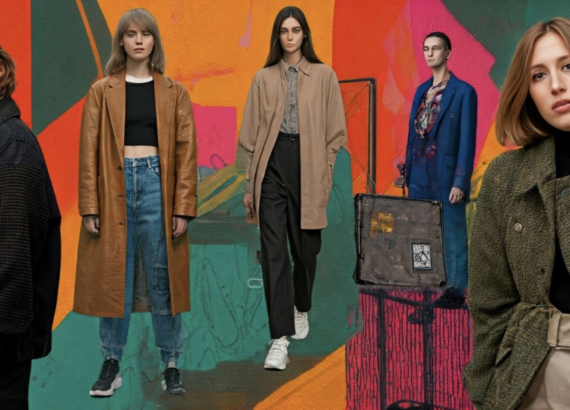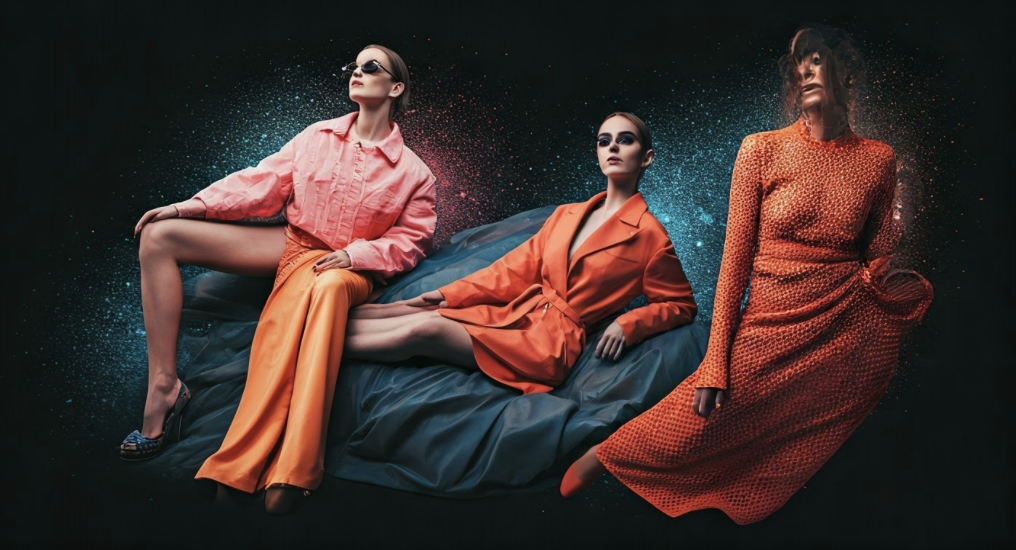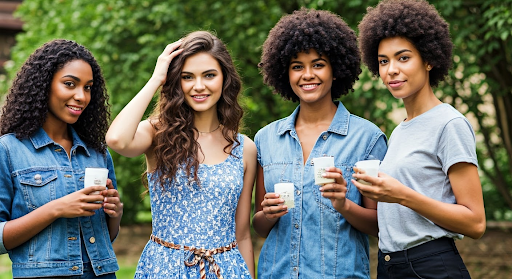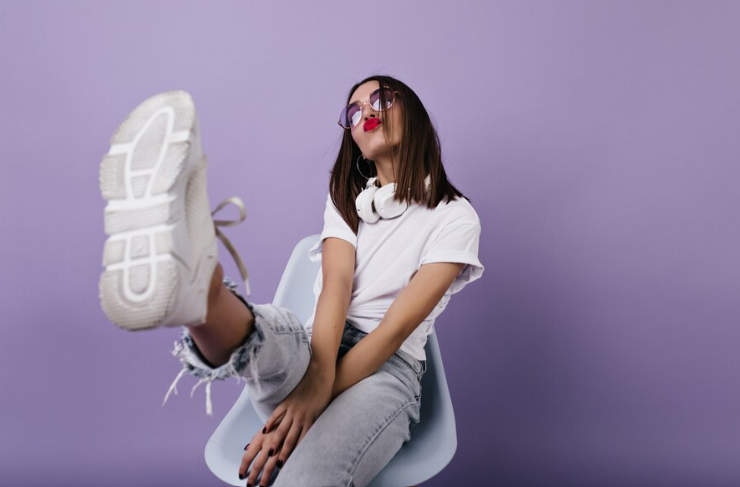Fashion photography is a vast and competitive field, making it overwhelming for newcomers to navigate. With so many styles and niches, it can be difficult to know where to start or how to choose a focus.
If you’re new to fashion photography, you might be struggling with finding your style, understanding the industry, or even feeling unsure of which type of photography resonates with you the most. The sheer variety can feel intimidating when you’re trying to carve out your own creative path.
But don’t worry—fashion photography is full of opportunities to experiment and grow! Whether you’re drawn to the elegance of high fashion or the edginess of street style, there’s a niche waiting for you. By exploring different types of fashion photography, you’ll discover which one ignites your passion and allows your creativity to shine. Ready to dive in? Let’s explore the vibrant world of fashion photography together!
What is Fashion Photography?
Fashion photography is a special type of photography focused on showcasing clothing and accessories. It’s a creative field that also has a lot of competition. Photographers in this area usually focus on different styles, depending on the needs of the fashion industry.
There are many types of fashion photography, each with its own style and appeal. While it might seem complicated at first, don’t worry—we’re here to help make things clear. Keep reading to explore the exciting world of fashion photography!
Types of Fashion Photography

Fashion photography is a special type of photography focused on showcasing clothing and accessories in the best way, often blending elements of fine art. It’s a creative field that also has a lot of competition. Photographers in this area usually focus on different styles, including the main types of fashion photography, depending on the needs of the fashion industry. There are many types of images in fashion photography, including fashion photography covers and other types of photography, each with its own style and appeal. While it might seem complicated at first, don’t worry—we’re here to help make things clear. Keep reading to explore the exciting world of fashion photography!
High Fashion Photography
When you think of fashion photography, high fashion photography often comes to mind. These stunning images are commonly featured on the covers of top magazines like Vogue, Elle, and Harper’s Bazaar, and are even displayed in art galleries.
High fashion photography is more about creating a mood or lifestyle than just showing off clothes. It’s all about glamor and drama, often resulting in imaginative and artistic photos that blur the lines of reality.
The models in high fashion shoots are usually well-known—supermodels, actors, or other famous figures from various fashion houses. Every detail in the photos, from the setting and lighting to the clothes and props, is carefully planned to match the photographer’s vision, ensuring a high level of detail. High-quality cameras are used to produce clear, high-resolution images for large print ads. High fashion shoots often involve a large team of professionals, making it one of the most complex types of fashion photography to pursue. Despite the challenges, it remains a symbol of creativity, luxury, and glamor in the fashion world.
Editorial Fashion Photography
Sharing a blurred boundary with high fashion photography is Editorial Fashion Photography, though it carries a more grounded, tangible essence. It draws its name from its origin – images shot to accompany articles in various publications like books, magazines, and newspapers.
Unlike high fashion, editorial photography, and this type of fashion photography, editorial fashion photographs prioritize storytelling or crafting a narrative. The narrative does not always require an article or plot; the story is told through the depiction of the clothes, the models, and the surrounding elements. You’ll often find these shots taken on location to provide context and evoke a sense of realism.
Loaded with creativity, editorial shoots in fashion photography can make use of a broad spectrum of gear, outfits, poses, and styles depending on the narrative. While the production budget may rival high-fashion photos, especially with exclusive clients, this genre of photography allows the photographer greater autonomy to interpret and represent the appointed briefing.
Street Fashion Photography
Street Fashion Photography pays homage to the real world, highlighting the charismatic ways ordinary people style and wear fashion. This type of street photography diverges greatly from its counterparts and is often described as the polar opposite of high fashion. Rather than elaborate dresses and designer pieces, street fashion photoshoots frequently highlight everyday wear like jeans, T-shirts, and hoodies, capturing the fashion crowd’s unique style. These photos grace fashion magazines or adorn social media platforms, shaping and inspiring current trends.
Several noteworthy aspects of Street Fashion Photography include:
- Publication in magazines: Content is typically used to discuss current trends and fashion advice.
- Social Media Sharing: Street style photography has a strong online presence, encouraging and influencing fashion trends among the masses.
- Candid approach: Most street fashion photographs capture subjects in their natural element, showcasing genuine, unforced fashion statements.
- Event-centric shoots: Modern street fashion photographers often focus on major events like Fashion Week, providing insight into what attendees wear.
Consequently, Street Fashion Photography can encapsulate both candid reflections of relaxed outfits and snapshots of fashion’s elite in their most put-together endeavors.
Catalog Fashion Photography
Catalog fashion photography is a straightforward style designed to showcase clothing and accessories with minimal distractions. Models are typically photographed in a studio with a plain background to ensure the product stands out. Positioning is key, as there are no props or extra elements to divert attention from the outfit.
Lighting is essential in these shoots, highlighting details and textures without distorting colors. Standard lenses are used to capture the model’s full body without distortion. For aspiring fashion photographers, catalog photography offers a great way to build skills and gain experience in the industry.
When photographing a product for a catalog, it’s important to provide a variety of angles to give customers a comprehensive view. Start with a front shot to showcase the product’s main features, followed by side and top angles to offer different perspectives. This allows customers to understand the product’s dimensions and design from multiple viewpoints. Detailed close-ups are also essential for highlighting smaller features, textures, or unique details that make the product stand out. For items like clothing or footwear, a 360-degree view is highly beneficial, allowing customers to see how the product looks from all sides, helping them visualize it in real life.
Runway Fashion Photography
Next up, Runway Fashion Photography offers a direct window into the spectacular world of fashion shows. In many ways, this variant aligns with photojournalism or documentary-style photography, as the photographer doesn’t control most image components. The setting, lighting, and even the shooting angle are predominantly predetermined by the show’s organizers.
Given these constraints, runway fashion photographers often opt for zoom lenses, offering versatility and suitability for low-light scenarios. Since runways are typically bustling spots, setting up a tripod is rarely viable; thus, a monopod often serves as a handy alternative.
One of the most critical skills in runway photography is the ability to think and act fast. Nailing the ideal moment with accurate exposure is pivotal; there are no do-overs on the runway.
Lookbook Photography
Lookbook Photography serves as a melding pot of catalog shoots and lifestyle angles. Historically, designers would create ‘lookbooks’ – small books to showcase their latest collection. Today, these lookbooks see a digital release, often in interactive formats, thus seamlessly blending the line between traditional and digital media.
| Key Aspects of Lookbook | Sub-Sections |
| Targets: | Large buyers or retailers |
| Aim: | Sell an entire collection |
| Approach: | Conceptualize each image around an idea/story |
Lookbooks convey the mood or personality of a clothing line, ensuring each image captures the collection concept or idea. Depending on the desired output, lookbooks are shot either on location or in-studio, leaving room for creativity.
While many established brands still print their lookbooks, numerous brands have started leveraging them for their websites or eCommerce platforms. To satisfy clients and attune to their marketing strategies, a comprehensive briefing becomes pivotal in Lookbook Photography.
Advertising Fashion Photography
In today’s world, we’re constantly surrounded by ads, and one specific type that stands out is Advertising Fashion Photography, particularly high fashion imagery. This genre is all about selling clothing or accessories through powerful, eye-catching images in advertising campaigns that appeal to fashion enthusiasts. These photos, often taken during a photo shoot against a neutral backdrop, are carefully crafted to grab the attention of potential buyers and are commonly seen in a variety of places—on social media, in magazines, at bus stops, and even on large billboards. The goal is to make the product look irresistible, drawing people in and encouraging them to make a purchase.
From simple product shots to elaborate concepts involving top models or celebrities, the range of advertising fashion photography is vast. This genre revolves around precision and impact. Every image is meticulously planned and executed to prompt consumer interest and influence purchase decisions.
Hence, the task of an advertising fashion photographer extends beyond technical skills. They must also understand their target audience, keeping abreast of evolving fashion trends and societal tastes to create relevant, sizzling ads that resonate.
Glamour Photography
Nestled between fashion and portrait photography rests Glamour Photography. This category concentrates on highlighting the model and their beauty. Each decision – from styling to makeup – is made to draw out the best from the image’s subject. The model is the focus, with wardrobe, makeup, and styling intended to enhance, not distract from, the subject.
These photos are often shot in studios, although on-location shoots may be equally used depending on the photographer’s creative vision. Frequently, a telephoto lens with an appropriate focal length is used in Glamour Photography. By allowing the photographer to maintain physical distance from the subject while capturing stunning close-ups, these lenses foster an environment of comfort and professionalism for the model.
With its blurred lines and overlapping elements, Glamour Photography serves as a perfect example of the fluidity and dynamic nature of fashion photography. Whether creating portfolios or shooting”For the Love of Beauty” editorials, this genre allows for creativity while amplifying beauty.
Alternative fashion photography
Finally, let’s venture into the unorthodox space of Alternative Fashion Photography. Serving as a divergent offshoot of street fashion photography, it welcomes everything that doesn’t fit the mainstream. The world of fashion changes swiftly, meaning that what might be considered ‘alternative’ today could potentially become mainstream tomorrow.
In previous eras, styles like grunge or hip-hop were seen as alternatives; they are now in high demand. An alternative style isn’t limited to a specific look or subculture – once a style becomes prominent, it’s likely already crossed over into mainstream territory.
Key aspects of Alternative Fashion Photography include:
- Flexibility: This form embraces rapid changes in fashion trends.
- Niche appeal: Alternative fashion photography is rarely done by large fashion magazines.
- Online presence: Street-style blogs often feature alternative fashion photography, documenting emerging trends.
- Predictive nature: This genre has a knack for spotting trends before they skyrocket in popularity.
It’s important to note that despite its title, Alternative Fashion Photography is less about being different and more about embracing an evolving perspective on style, a perspective that refuses to conform to traditional standards and instead celebrates the ever-changing fluidity of fashion.
Transform Your Fashion Portfolio with FlixStudio
At FlixStudio, our expert photographers capture diverse styles that highlight your unique vision. With AI-based styling and pairing recommendations, a DIY look creator, and a team of expert fashion stylists, we focus on achieving the perfect aesthetic for your clothing. For stunning photography, contact us at info@flixstudio.io or (917) 830-6172 to effortlessly coordinate your model photoshoot.
Conclusion: Choosing the Right Style for Your Project
Now that we’ve investigated the different types of fashion photography, how do you choose the stream that aligns best with your creative vision and project requirements? Understanding each category—from the iconic imagery of high fashion to the candid flare of street style, all the way to the experimental realm of alternative fashion—is vital to making an informed decision.
Remember, the choice of lifestyle photography style can vastly impact the viewer’s perception of your work, shaping the narrative you wish to tell through your fashion photoshoot. The fashion industry is ever-evolving and extremely dynamic; what may seem trendy today might become a classic tomorrow. Stay updated, understand your audience, and adapt your style as needed. The versatility and diverse nature of this genre are a testament to the possibilities that lie ahead. Experiment with each form until you find one (or many) that resonates with your style. Happy shooting!
Frequently Asked Questions
How has fashion photography evolved over the years?
Fashion photography has considerably evolved over time, transforming from simple product-focused photos to a more diverse and creative practice. It has expanded into numerous sub-genres, each with distinctive styles, allowing photographers to depict their unique interpretations of fashion.
How does a fashion photographer build their portfolio?
A fashion photographer’s portfolio is built by capturing diverse images showcasing their areas of specialization, be it high fashion, street style, or other sub-genres. Versatility, creativity, and a strong understanding of lighting, camera settings, and post-production techniques are key to creating an exceptional fashion portfolio.
What are the challenges of working in fashion photography?
Challenges in fashion photography include managing unpredictable lighting conditions, working under tight deadlines, handling costly equipment, and coordinating with different teams such as stylists, models, and makeup artists. Additionally, staying abreast of the frequent changes in fashion trends and consumer tastes is essential for success in this field.
How do fashion photography and commercial photography differ?
While both deal with selling a product, fashion photography often veers into the realms of art and storytelling. It focuses on the lifestyle around the clothing or accessories being showcased. Commercial photography, on the other hand, involves a more straightforward presentation of products appealing directly to consumer needs.
What qualifications do you need to become a fashion photographer?
A bachelor’s degree in photography is helpful but not mandatory. Most fashion photographers build their careers based on skills and experience. Understanding camera techniques, styling trends, retouching skills, and proficiency in software like Photoshop and Lightroom are crucial elements for those pursuing a career in fashion photography.
Who are the 5 fashion photographers?
Some of the most iconic fashion photographers include Richard Avedon, renowned for his revolutionary work in Vogue, Helmut Newton, known for his provocative aesthetic, and Bruce Weber admired for his naturalistic style. We also have Annie Leibovitz, who is recognized for her captivating celebrity portraits, and Guy Bourdin, who is memorable for his unconventional compositions.



